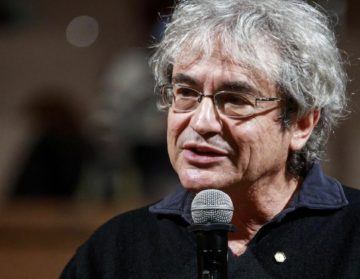Marcus Chown in Prospect:
 Rovelli has written a new book. Its title, Helgoland, refers to a barren island off the North Sea coast of Germany, where the 23-year-old physicist Werner Heisenberg (who would go on to work on the unrealised Nazi atomic bomb) retreated in June 1925. He was trying to make sense of recent atomic experiments, which had revealed an Alice in Wonderland submicroscopic realm where a single atom could be in two places at once; where events happened for no reason at all; and where atoms could influence each other instantaneously—even if on opposite sides of the universe.
Rovelli has written a new book. Its title, Helgoland, refers to a barren island off the North Sea coast of Germany, where the 23-year-old physicist Werner Heisenberg (who would go on to work on the unrealised Nazi atomic bomb) retreated in June 1925. He was trying to make sense of recent atomic experiments, which had revealed an Alice in Wonderland submicroscopic realm where a single atom could be in two places at once; where events happened for no reason at all; and where atoms could influence each other instantaneously—even if on opposite sides of the universe.
Heisenberg’s breakthrough was to realise that, as far as atoms and their components are concerned, everything is interaction. Subatomic particles such as electrons and photons are not objects that exist independently of being prodded and poked, but merely the sum total of their interactions with the rest of the world. “Basically, physics confirmed what several philosophers over the centuries have suspected—that the world is a web of interactions and nothing exists independently of that web,” Rovelli tells me. “It is at the atomic and subatomic, or quantum, level that we confront this truth most dramatically.”
More here.
